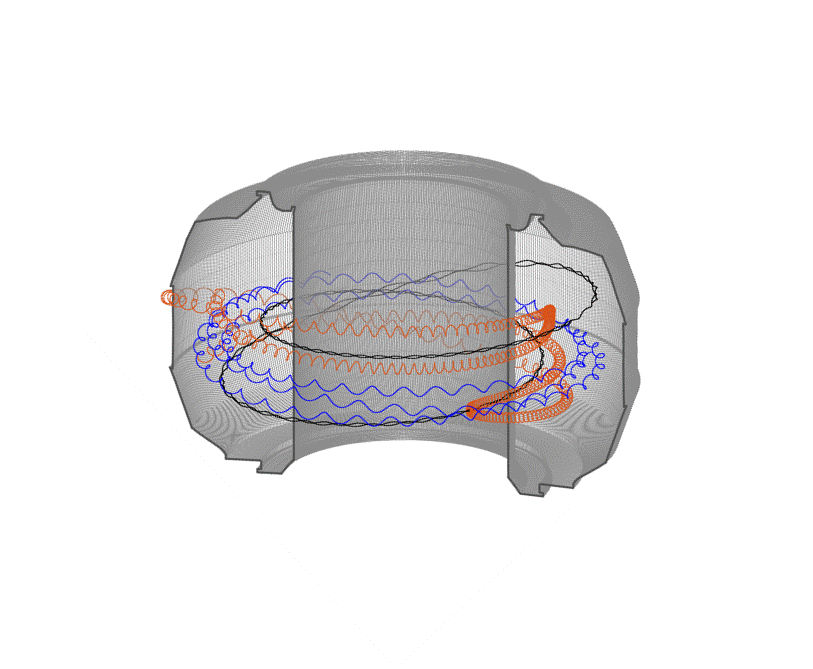
Filter News
Area of Research
- Advanced Manufacturing (4)
- Biology and Environment (21)
- Clean Energy (74)
- Computational Biology (1)
- Computational Engineering (1)
- Computer Science (1)
- Energy Frontier Research Centers (1)
- Fuel Cycle Science and Technology (1)
- Fusion and Fission (24)
- Fusion Energy (11)
- Isotope Development and Production (1)
- Isotopes (8)
- Materials (59)
- Materials for Computing (9)
- National Security (19)
- Neutron Science (22)
- Nuclear Science and Technology (23)
- Nuclear Systems Modeling, Simulation and Validation (2)
- Quantum information Science (2)
- Supercomputing (28)
- Transportation Systems (2)
News Type
News Topics
- (-) Advanced Reactors (25)
- (-) Biomedical (39)
- (-) Cybersecurity (26)
- (-) Fusion (32)
- (-) ITER (6)
- (-) Nanotechnology (44)
- (-) Nuclear Energy (61)
- (-) Space Exploration (13)
- (-) Transportation (73)
- 3-D Printing/Advanced Manufacturing (89)
- Artificial Intelligence (53)
- Big Data (32)
- Bioenergy (56)
- Biology (62)
- Biotechnology (15)
- Buildings (45)
- Chemical Sciences (52)
- Clean Water (22)
- Climate Change (62)
- Composites (23)
- Computer Science (113)
- Coronavirus (34)
- Critical Materials (25)
- Decarbonization (47)
- Education (3)
- Element Discovery (1)
- Energy Storage (88)
- Environment (119)
- Exascale Computing (14)
- Fossil Energy (2)
- Frontier (19)
- Grid (43)
- High-Performance Computing (50)
- Hydropower (8)
- Irradiation (2)
- Isotopes (35)
- Machine Learning (32)
- Materials (102)
- Materials Science (99)
- Mathematics (7)
- Mercury (9)
- Microelectronics (1)
- Microscopy (36)
- Molten Salt (8)
- National Security (37)
- Net Zero (7)
- Neutron Science (87)
- Partnerships (31)
- Physics (44)
- Polymers (26)
- Quantum Computing (15)
- Quantum Science (39)
- Renewable Energy (1)
- Security (18)
- Simulation (21)
- Statistics (2)
- Summit (29)
- Sustainable Energy (89)
- Transformational Challenge Reactor (4)
Media Contacts

Self-driving cars promise to keep traffic moving smoothly and reduce fuel usage, but proving those advantages has been a challenge with so few connected and automated vehicles, or CAVs, currently on the road.

If you ask the staff and researchers at the Department of Energy’s Oak Ridge National Laboratory how they were first referred to the lab, you will get an extremely varied list of responses. Some may have come here as student interns, some grew up in the area and knew the lab by ...

The United Kingdom’s National Nuclear Laboratory and the U.S. Department of Energy’s Oak Ridge National Laboratory have agreed to cooperate on a wide range of nuclear energy research and development efforts that leverage both organizations’ unique expertise and capabilities.

An Oak Ridge National Laboratory-led team used a scanning transmission electron microscope to selectively position single atoms below a crystal’s surface for the first time.

Scientists at the Department of Energy’s Oak Ridge National Laboratory induced a two-dimensional material to cannibalize itself for atomic “building blocks” from which stable structures formed. The findings, reported in Nature Communications, provide insights that ...

Qrypt, Inc., has exclusively licensed a novel cyber security technology from the Department of Energy’s Oak Ridge National Laboratory, promising a stronger defense against cyberattacks including those posed by quantum computing.

Sergei Kalinin of the Department of Energy’s Oak Ridge National Laboratory knows that seeing something is not the same as understanding it. As director of ORNL’s Institute for Functional Imaging of Materials, he convenes experts in microscopy and computing to gain scientific insigh...

The materials inside a fusion reactor must withstand one of the most extreme environments in science, with temperatures in the thousands of degrees Celsius and a constant bombardment of neutron radiation and deuterium and tritium, isotopes of hydrogen, from the volatile plasma at th...

An Oak Ridge National Laboratory–led team has learned how to engineer tiny pores embellished with distinct edge structures inside atomically-thin two-dimensional, or 2D, crystals. The 2D crystals are envisioned as stackable building blocks for ultrathin electronics and other advance...

Fusion scientists from Oak Ridge National Laboratory are studying the behavior of high-energy electrons when the plasma that generates nuclear fusion energy suddenly cools during a magnetic disruption. Fusion energy is created when hydrogen isotopes are heated to millions of degrees...


